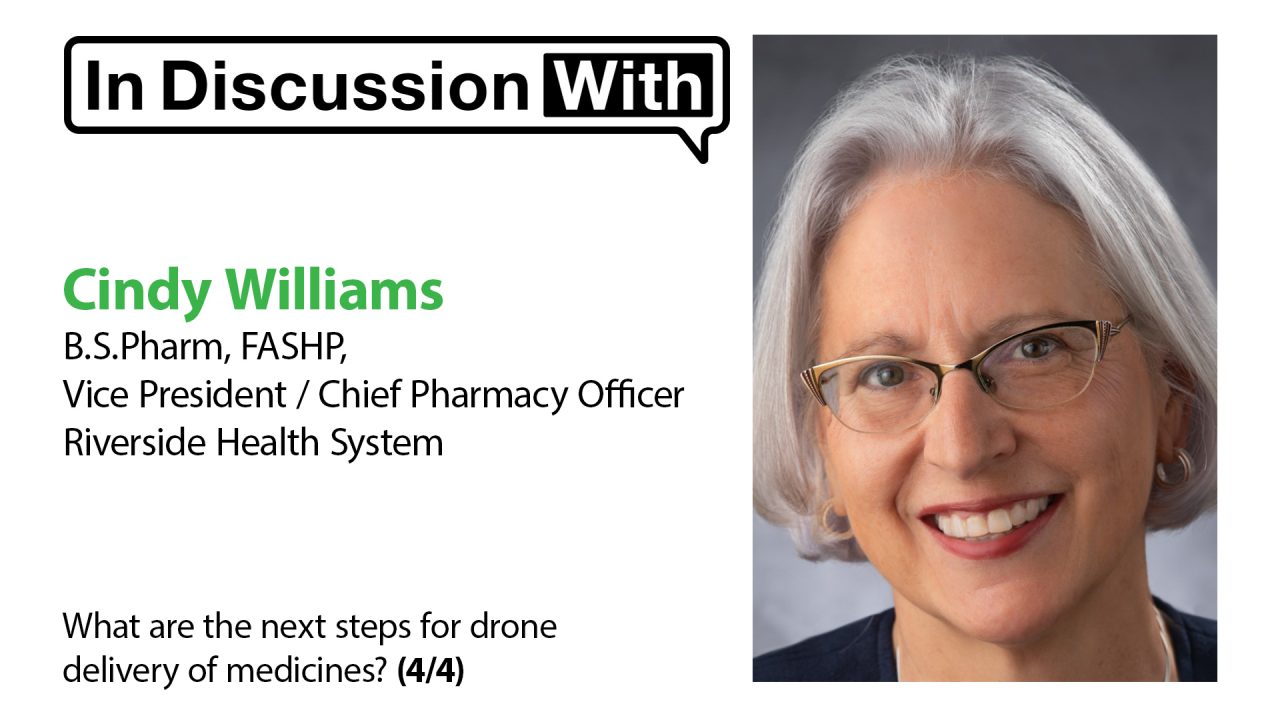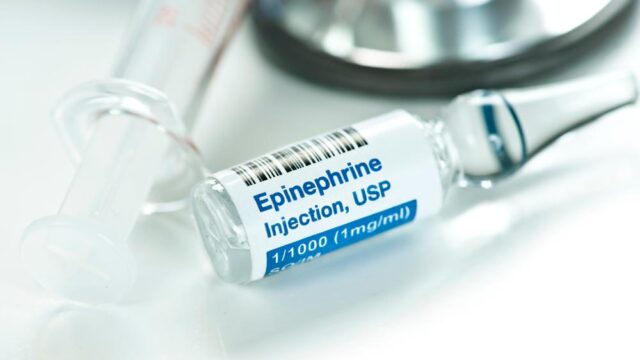Advertisment
What are the next steps for drone delivery of medicines?

Much has been learned in the process of developing the drone-delivery scheme. Routine deliveries of medications have been made every 90 days to project patients for 18 months and the team is now collaborating with others to share the learning, according to Cindy Williams, Vice President and Chief Pharmacy Officer at Riverside Health, Virginia, USA.
As part of the project to evaluate delivery of medicines by drone it was essential to comply with Federal Aviation Authority (FAA) regulations and establish the ‘guard-rails’ within which the team had to operate. This included the types of medicines could be carried and the distances travelled – initially restricted to the ‘visual line of sight’ or two miles. In addition, “as a hospital we had to be very sensitive to helicopters that may be coming in to our helipad to medically evacuate patients and so we did have very tight communication with our emergency medical response personnel in the area”, says Ms Williams. Another thing that had to be taken into account was crop-dusting, as the service was operating in a rural area where this is a common occurrence. “I think once they understood what we were doing, that we were doing this in a pilot manner that it would be very well-orchestrated and planned and on very specific days ….. we were able to bridge that relationship and worked very collaboratively with them”, she adds.
Taking stock of what has been achieved, Ms Williams says that delivery medications to patients within a five-mile radius of the hospital has been successfully accomplished. In fact, over the past 18 months they’ve made routine deliveries every 90 days to the patients enrolled in the pilot scheme. During the process one thing they have learned is that drones are very weather-dependent – they cannot fly in windy conditions.
When it comes to delivering medicines over a longer distance – in this case the 17-mile journey to Tangier Island – they are still somewhat constrained by FAA regulations. However, they have been able to deliver stock medications to the clinic on the island. Another important development has been the use of the drone on its return journey to carry blood samples (laboratory tubes) for diagnostic testing. This has meant that same-day results can be provided to the clinic. Hitherto this has not been possible – blood samples have had to be sent by ferry or carried by a physician on his monthly visit. “So, the idea is [that] the drone [service] could actually expand beyond medication delivery and do other types of functions”, says Ms Williams.
At present, the existing FAA waiver (for the drone) does not permit the carriage of items that are considered to represent commercial trade. “So, us delivering supplies to our own clinic is not considered commercial trade because it’s all owned by the same organisation, but us delivering to a patient a filled prescription from the pharmacy – the FAA considers that commercial trade”, explains Ms Williams.
The project is now coming up to the end of phase one funding and funding for the next phase will now be sought, she says.
Turning to the lessons learned, Ms Williams says that during the course of the project she learned that there were two other similar projects, one in Salt Lake City, Utah and one in Charlotte, North Carolina, neither of which had focused on rural communities in the way that this project does. Another important lesson was that seed money from the federal Government was critical for rapid progress. “When I talked to some of my colleagues across the country that were perhaps doing this with more limited grant funding – we were able to do far more deliveries in a short period of time than they were able to do in several years because we had the ability to bring together a really strong collaborative team to, I would say, jump start … the process”, says Ms Williams. She acknowledges that she has also learned a great deal about FAA waivers and the value of advocacy to change the status quo.
One of the goals of the project was to develop a roadmap for others so that they could make more rapid progress using the Virginia blueprint. This seems to be happening now – Ms Williams’ team is working with a collaborative in Maryland, helping them to go further and faster by sharing what they learned on this project.
Read and watch the full series on our website or on YouTube.





